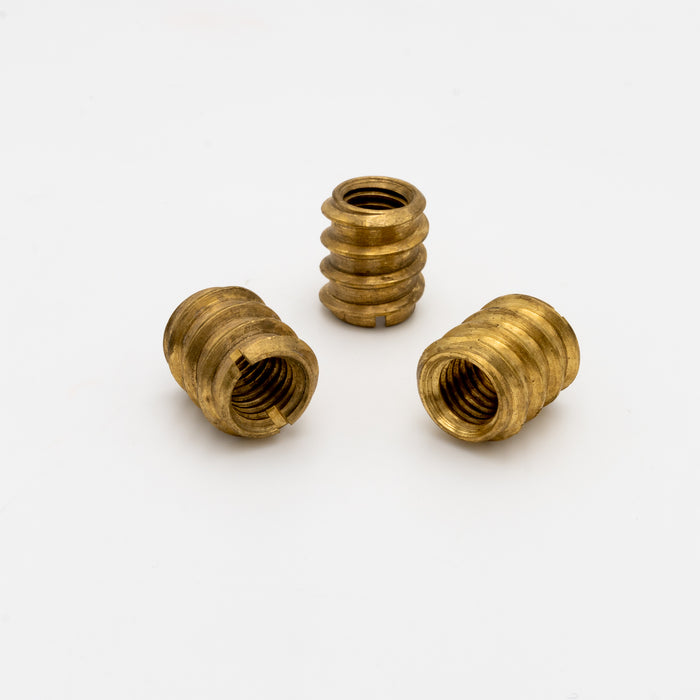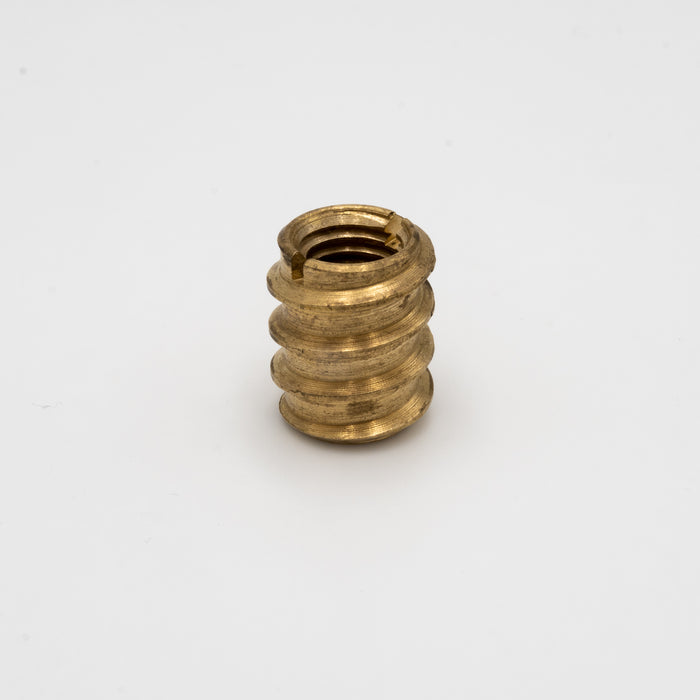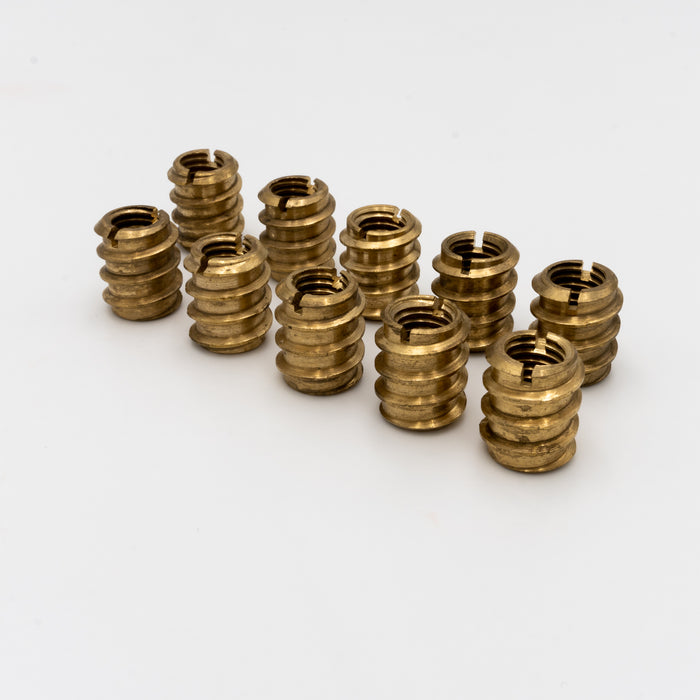
Screw-in nut M 10 for wooden walls
1 screw-in nut galvanized M10
Screw-in nuts are required for mounting climbing holds on a wooden wall. The screw-in nuts act as a counterpart to the hexagon socket screws.
When do you need screw nuts? assembly instruction?
Screw-in nuts are used when you cannot get to the back of the wooden panel or when the climbing holds are to be attached to a solid beam. To attach the screw nuts, drill a 12 mm hole with a wood drill (depth approx. 2 - 3 cm). Then clean the hole from the wood chips. Now screw the screw-in nut into the wood from the front using a slotted screwdriver (width at least 12 mm). As soon as the screw nut has sunk into the wood, you can attach the climbing hold to the wood.
Where are you not allowed to use screw nuts?
Screw-in nuts must NOT be used with OSB, USB, MSB boards or similar. This can easily lead to breakouts of the sleeve, since this wood is not of high quality.
Where can you use screw nuts?
Screw-in nuts may be used with normal wooden beams or with high-quality multi-layer boards (multiplex and screen-printed boards) if you can no longer access them from the back. The minimum thickness should be 30 mm. In addition, there should be a distance of at least 20 mm to the edge of the beam.
Characteristics:
- Material: Galvanized steel
- metric internal thread M10
- Cylinder head screw DIN EN ISO 4762 - M10 (DIN 912)
- Countersunk screw DIN EN ISO 10642 - M10 (DIN 7991)
Eigenschaften und Montage
Eigenschaften:
- Werkstoff: Stahl verzinkt
- metrisches Innengewinde M10
- dickwandige Ausführung (Plattenstärke ca. 2 mm)
- Mutternhöhe (inkl. Platte): ca. 12,0 mm
- erforderlicher Vorbohrdurchmesser: ca. 12 mm
- Befestigung der Spezial-Einschlagmutter mit 2 Spanplattenschrauben
(ca. 4 mm Durchmesser) - Befestigung der Klettergriffe mit einer gewöhnlichen M10 Schraube
Option mit Spanplattenschrauben,
Eigenschaften der Spanplattenschrauben:
- Vollgewindeschraube mit formschönen Pan Head Kopf zur universellen
Befestigung von Metallbeschlägen oder Halterungen aus Kunststoff in Holz
im trockenen Innen- oder Feuchtbereich - Ideale Kraftübertragung dank RW-Antrieb
- Mehr Power durch größere Kontaktfläche am Bit
- Mehr Stabilität, einhändiges Arbeiten, punktgenaues Ansetzen durch
Steck-Effekt und perfekten Sitz des Bits - ASSY 4 PH Stahl verzinkt Vollgewinde Pan Head RW
- SHR-PANHD-HO-RW20-(A3K)-5X20/18, ASSY
4 PH
Fazit:
Die Spezial-Einschlagmutter "PROFESSIONAL" bietet Ihnen eine
hochwertige Alternative zur normalen Einschlagmutter. Auch weist sie Vorteile
gegenüber anderen Spezial-Einschlagmuttern, die mit 4 Spanplattenschrauben
montiert werden, auf. Der Grund hierfür ist nicht nur der halbierte
Arbeitsaufwand bei der Befestigung der Spezial-Einschlagmutter
"PROFESSIONAL", sondern auch ihre Belastbarkeit. Denn die zwei Löcher
für die Spanplattenschrauben haben einen wesentlich größeren Durchmesser als
die vier Löcher in einer herkömmlichen Spezial-Einschlagmutter. Dadurch können
bei der Montage der "PROFESSIONAL" dickere Schrauben verwendet
werden, wodurch Ihre Klettergriffe den optimalen Halt bekommen.
Montage
Als ersten Schritt legen Sie ein Raster an und markieren alle Stellen, wo später die Einschlagmuttern gesetzt werden sollen. Für Boulderwände empfiehlt sich ein Lochraster von 10 cm (Bedarf pro qm: 95 Einschlagmuttern oder 15 cm (Bedarf pro qm: 45 Einschlagmuttern), wobei jeweils die zweite Reihe versetzt zur oberen Reihe ist. Eine andere Variante ist, dass Sie genau so viele Einschlagmuttern verwenden, wie Sie Klettergriffe haben. Der Nachteil an dieser Variante ist, dass Sie wenig Umschraubmöglichkeiten an der Wand haben. Zudem müssten bei einer Erweiterung der Kletterwand für mehr Einschlagmuttern, die ganzen Platten wieder abmontiert werden.Nachdem markieren der Stellen für die Einschlagmutter, bohren Sie dort 12 mm Löcher. In diese wird die Einschlagmutter von der Rückseite in die Platte eingeschlagen. Für einen besseren Halt der Einschlagmutter, tragen Sie bitte einen speziellen Holz-Metall-Kleber auf die Mutter auf.


